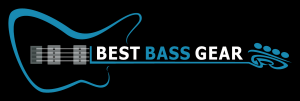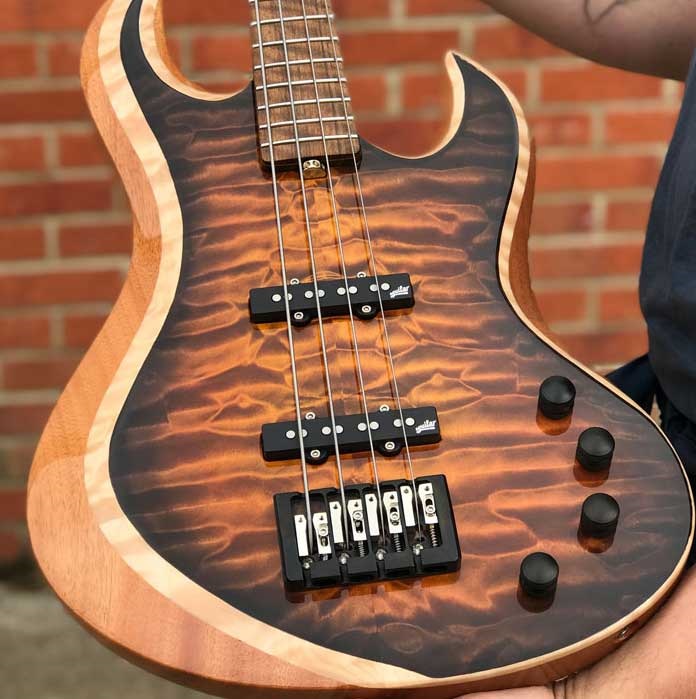See Michael Pope’s business listing here
Michael Pope is one of the rare breeds in the industry that is not only the designer of one of the best preamps you can buy, but also a great player as well.
You’ve played with lots of pretty well known musicians since the mid ’90s… Chick Corea, David Sanborn, The Manhattan Transfer, and many more. You’ve also been building preamps for Fodera since around the same time. Are you a musician, or an electronics engineer?
I’m a little of both, but mostly just confused. In my mind, there is a lot of crossover between any disciplines that have a creative element. Of course, there are lots of rules to follow when designing electronics that can get you into real trouble if you ignore them. Music has lots of “rules” too, but generally nothing earth shattering will happen if you do something “wrong.” I’ve heard of guys exploding from playing too fast, but I suspect those are just urban legends.
My dad is an accomplished concert pianist, and also dabbled in electronics. I grew up around him building Dynykit and Heathkit amps, etc., and had a general understanding that there was a certain degree to which someone could “intuit” their way into electronic circuits. I was never afraid to try stuff, and so long as I was only doing it for myself, I wasn’t worried about screwing things up. As my applications got more complicated, my knowledge base grew, and the people I surrounded myself with became more and more expert. If you read this paragraph in the context of music, it pretty much makes sense too. That’s kind of my point. Electronics or music, you’re creating something in both fields. You need skills in both fields. The fact that one is more analytical than the other is a moot point, to me. An EQ can certainly be musical or not musical, and it can certainly be experienced as a “subjective thing,” whether it is actually subjective or not.
So did you study electronics in any formal way?
No, other than having some really brilliant minds to usher me into the realm of more universal functionality, I had no “training.” I never took any classes, but I took it upon myself to understand as much about what I was doing in order to do a good job. I didn’t concern myself with knowing as much about the field of electronics as possible, though. That would be like trying to learn everything there is to know about all aspects of music. I don’t know anyone who does that. Everyone specializes to some degree.
You did study music, though, right?
Yes. I’ve studied most of my life. My family life as a kid was deeply musical. My mom would come home after family night at the movies, sit down at the piano in the dark and play most of the score from the movie we’d just seen. On one hearing. And my dad was the guy who called the radio stations to complain that their turntables were running sharp. So my whole life was a bit of a formal education in music. I studied piano for a few years from around 8 to 10 years old….can’t remember for sure, but something like that. Then I started attending Bowling Green State University where my dad taught, and played in their lab band, combos, and took lessons from Jeff Halsey. After than, University of North Texas, and just recently a masters where I focused on classical bass.
So how did you come to design electronics on a commercial level?
Well, it was my association with Fodera, really. Around the time I finished recording my first record, “Walk Your Dogma,” I’d gotten to know Ned Mann. Ned was a brilliant bass player and studio owner/engineer where I recorded part of, and mixed/master that CD. I was lamenting my Ken Smith bass, at the time. I’d owned it since about 1987 and really liked it an awful lot. But my ear was changing to a more “Fender” sensibility and the Smith bass just didn’t have that. It’s no criticism…it’s not supposed to. That’s not its intended sound. Ned had a Fodera fretless, as he was an endorser at the time. He suggested I go see them, as they were barking up the same tree…how to get a multi-string bass to sound more like an old J-bass. I should point out that Ned Mann passed away not long ago, and very prematurely due to ALS. It’s very sad. He was a brilliant musician, producer, and engineer! And not nearly well-known as he should have been.
One of the first times I dropped by their shop, they’d just gotten a set of Seymour Duncan dual coil pickups in. They were for their wide spaced 6 strings. They didn’t even have covers, yet. As it happened, in my experimenting with my Smith bass I had routed out the entire front of it, so a wide variety of pickups could be installed in a variety of positions. We took the opportunity to put the Duncans in my bass, using blue masking tape to secure them. Joey had wired them in series. We put them in with the center of the pickups right where they’d be on an old J-bass. We played the bass and it sure sounded different. More open, more top end, more growl, etc.
Then I suggested we try positioning them so that just one coil was in the “Fender” spot, and that we wire them in parallel with a switch to turn off the extraneous coil when not needed. We plugged it in, played it, and looked at each other wide-eyed! There is was! That was the sound!
There were more refinements, of course, but that was the basic discovery. It’s funny, because it’s SO simple and obvious and not technologically ground-breaking in any way. It just hadn’t been done on a six-string bass and given the size of the coils, nobody was really sure how well it would work, or how noisy it would be, or whatever. It worked out well, though!
When the time came that they needed an update on the internal preamp they were using, I was just around, and they asked me if I wanted to build one. Granted, I hadn’t the vaguest clue how to do such a thing, but I had an idea or two about where I could find out. After a few months of pretty intensive research and experimenting, including some long conversations with my uncle, and EE out on the west coast, I produced an active circuit that was just a couple passive volume controls wired to a home-made circuit board with a 3 band EQ. It went in a bass that went to their Japanese distributor, they liked it, and that was that. From then on, I was their supplier. It was incredibly lucky for me.
How did that relationship parlay into other ventures?
My loyalties surely lied with Fodera, and they remained the only company for whom I provided OEM circuits. However, because I’m a musician, I was always in need of extra cash. So I started doing little custom circuits for folks here and there. I didn’t try real hard, but the word spread around the world. Pretty soon I was building stuff fairly regularly. I made a kind of “generic” circuit board for my topology that I could stuff with various values of resistors and capacitors, fine tuning things by ear, mostly. Later I got a good software simulator, so I could build the circuits virtually and fine tune things that way. I got a pretty good sense for what EQ curves would sound what way in the context of the topology I using. My comfort zone was limited, but I was plenty comfortable when I was there. It just kind of grew and grew.
So then the next logical question is, how did that become the FlexCore?
Along the way, I met a guy named David Yates. He is a medical device engineer…highly successful with something like 65 US patents to his name, and a major ground-breaker in the field of electrosurgery. He is also a bass player, and a very good one at that. He and I started working together with Fodera around 2005. Little by little, he educated me in the pitfalls of trying to manufacture something that is so incredibly proprietary in its layout and assembly, and started to steer me more toward assembly techniques that took advantage of simpler connector schemes, modular designs, and layouts that were more industry standard, so that they might be manufactured by someone other than me or him in our respective basements. One day it occurred to me that there was probably a simple way that I could re-engineer the hand-made topology I’d been building so that it could be built in bulk in a proper manufacturing facility, and remain modular, allowing it still to serve a very wide variety of purposes for bass players. David and I worked feverishly on it for a few months, and after several refinements, we ended up with what we have now, as the FlexCore.
You’ve also released some other products under the Michael Pope Design label. What was the inspiration for the now discontinued MPP-1 and MPP-2 rack mount preamps?
Really they shared a lot of technology with the FlexCore. When designing a circuit, you kind of have to decide what’s most important for the application, at the price point you want, and in the quantities you want to build. The FlexCore is supposed to run on batteries which have to last a long time, be relatively inexpensive, and be able to manufactured on a medium to large scale basis with reliability and good performance. The MPP preamps simply ignored power consumption, price, and production concerns, and focused entirely on performance. Hence the exorbitant price point. They were pretty bad ass, though. They were just too slow-moving a product to be worth my trying to maintain.



